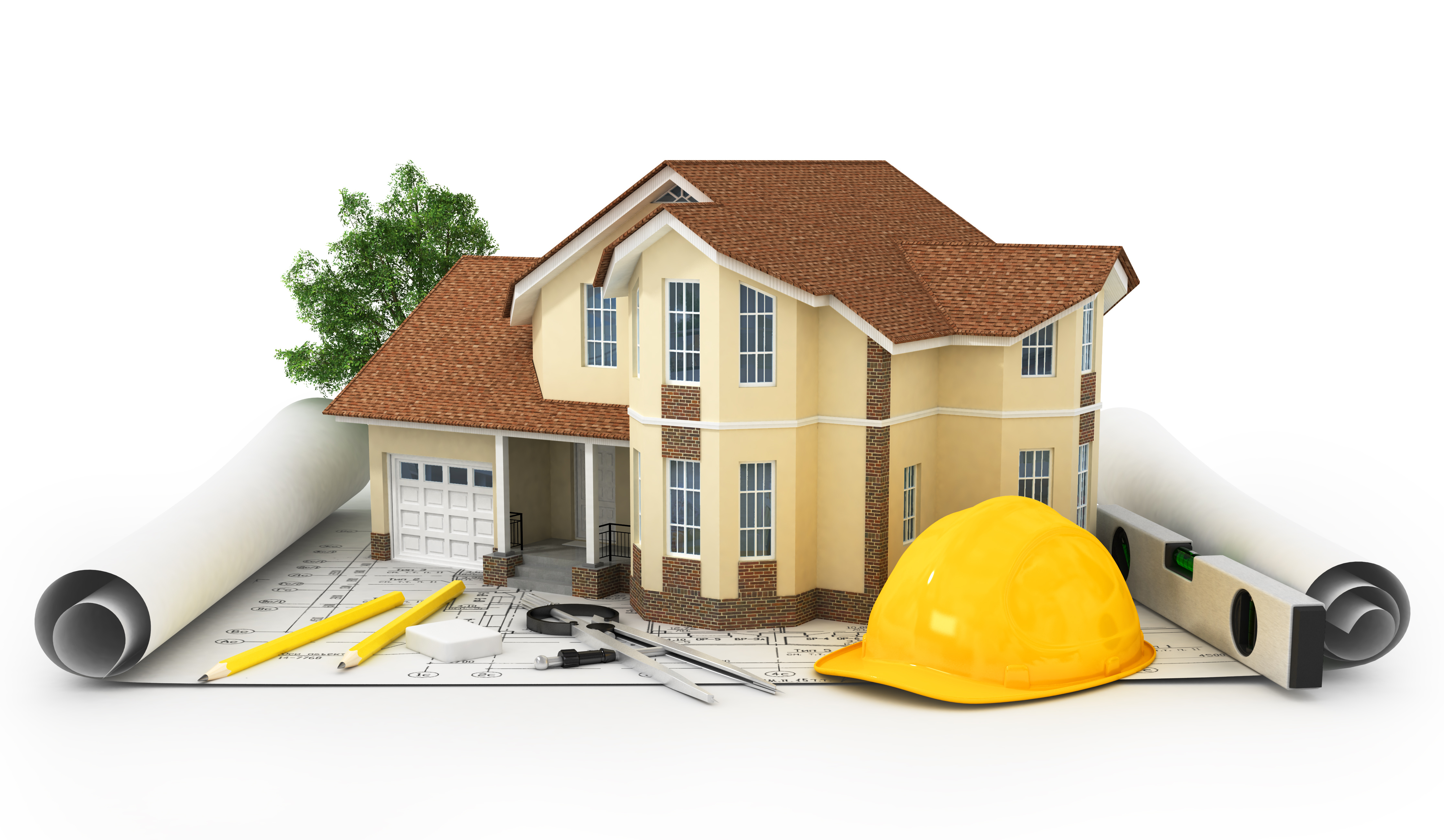
The year began with the Land Acquisition Bill coming into force that, while promising a fair play to farmers, leaves the real estate industry amidst uncertainty in the already sluggish market. Veena Kurup sketches the mood of the industry for 2014…
Last year was full of challenges for the real estate and construction sector, wherein the market saw fall across all its verticals – residential, commercial or retail and more so in all infrastructure construction segments. There were many reasons including the fall in GDP to as low as 4 percent in 2013. The other challenge was the constantly rising interest rates and inflation over the years. As inflation has a direct impact on the overall construction, overall cost escalations spiralled off and were ultimately passed on to the consumer. Also, there were issues of taxation, political instability, lack of clarity and frequent changes in policies that affected the pace of growth of the construction industry. In addition, substantial delays in approvals from central, state and local agencies had a dampening effect. However, the industry is optimistic this year, and is looking at the post-elections mid-year timelines when the market scenario could brighten up.
The outlook seems particularly positive for the affordable housing segment and core infrastructure construction, as many projects have been cleared very recently. The low cost and affordable housing sector is the key growth segment that many players are eyeing on, as even during last year when other sectors were slow, the low cost segment worked well in response to the constant demand for housing. Reserve Bank of India’s decision to reduce the interest rates helped in encouraging home buyers in the low cost housing and acted as a catalyst for the industry.
Industry Reactions on Policy Action• “Inclusion of private land and certain conditions of rehabilitation and resettlement in the land acquisition bill are the major hurdles for the real estate industry. As per the Act, a developer will now have to take the responsibility of rehabilitation of the owner while acquiring large parcel of land. The clause ultimately results towards a cost escalation in land acquisition and will discourage developers from acquiring large land parcels” Mayur Shah, Managing Director, Marathon Group. • “In a general scenario the time taken to get project approval is around two to three years. With the land acquisition act, the time for gaining approvals is going to increase, and will raise the project cost. I foresee this delay in gaining project approvals to ultimately affect the customer’s purchasing behaviour as the projects will become more expensive.” M Arun Kumar, Founder and Managing Director of CasaGrande • “The implementation of LARR Act is a positive measure from the government and a beneficial attempt for the masses to address the concerns of resettlement and rehabilitation issues. The concern over cost escalation due to the Act’s implementation will not affect real estate players who have their own healthy land asset.” Pankaj Srivastava, COO of Maitreya Realtors • “We follow a practice on acquiring land as per its asset value or potential for sustaining the concerns of market pressure and opportunity cost of land. We always buy land if we see immediate potential, i.e. if we can visualize a development which makes commercial and demand sense, this is primarily because we don’t believe in creation of land banks.” Chandrakant Kankaria, Director, Olympia Group. • “The Act will be favorable to the farmers, who were deprived so far from getting the right price for their land.” As per Bharat, the developers who are genuine and has the money bank to directly purchase land from the farmers at the right price won’t face any constraints.” Kumar Bharat, Director, BCC Infrastructures, Bharat City |
Land Acquisition Act
Land is considered as a major resource and prime determinant factor for the growth and development of any economic activity. The rapid pace of urbanization, supplemented with the increasing population in the country has accelerated the demand for infrastructure and construction facilities, particularly within the affordable brackets. The Right to Fair Compensation and Transparency in the Land Acquisition, Rehabilitation and Resettlement Bill, 2012, formerly known as the Land Acquisition, Rehabilitation and Resettlement (LARR) Bill, 2011 was passed last year to be a joint legislation for land acquisition and rehabilitation for all affected persons especially farmers compensation for their agricultural land. However, legislation outlines many procedures that now call for action from the state government to support and implement the bill. Prior to the LARR Act, all the land transactions within the country where monitored and processed through a 120 year old British law – The Land Acquisition Act of 1894. The 1894 Act was largely criticized for being loosely defined and uncertain interpretation of clauses. According to the industry majors, the 1894 Act failed to address the issue of fair compensation and rehabilitation when private land was acquired for public use.
The LARR Act which came into force on January 1, 2014 has aroused contradictory responses from the real estate sector. Though the Act aims to bring clarity in the land transfer process, realty builders view the laws as an additional burden on the cost of the construction. A major concern being uniformly raised by the industry is over an escalation in the cost of construction by 15-45 percent, especially in large infrastructure and residential projects. “Whether it is the setting up of greenfield projects or development of infrastructure or an attempt to meet the demand for housing and commercial spaces, the first step is land acquisition,” views Sunil Mantri, President of National Real Estate Development Council (NAREDCO) and Chairman and Managing Director of Mantri Realty.
For the real estate industry, the new Bill, with its incomplete framework for implementation, will increase delays in acquiring land and thus, overall costs of housing and infrastructure projects. “In the housing segment, around 20-30 percent of the total cost of house could be for the assembled land cost. In the main core of mega and metro cities, the contribution of the land cost as a part of the total cost of house becomes as high as 80-90 percent and the actual construction costs comes to only 10-20 percent,” informs V Suresh, Director, HIRCO Project Companies. Opportunity cost of land thus has evolved as a crucial aspect and influences the pace of construction sector.![]()
 Managing Director, Marathon Group
|
Impact on Affordable Housing
The LARR Act, which has now completed one month in practice though, gains a mixed bag of reaction from the real estate industry; a major concern over the Act’s implementation is being felt by the budget housing segment. The long time involved in getting all the approvals, supplemented with volatility in the raw material prices further escalates the availability of land within the affordable price brackets. “This will effectively defeat the government’s intention to provide affordable housing to the masses,” opines Mantri. Apart from the prolonged approval process and time involved in attaining clearances, other major concern being uniformly upheld by the real estate players is the impact over the purchasing capacity of the end user. According to NAREDCO’s analysis the rehabilitation and resettlement costs, mentioned in the Act, are excessive and will lead to higher project costs, which will in turn pass to the end users. “With rising land cost across all locations, creating affordable housing stock is becoming increasingly difficult. Without the government’s active participation in the affordable housing scheme by way of offering land at a nominal cost, it would not be possible to pursue affordable housing for any individual developer in the current circumstances,” says Mayur Shah, Managing Director, Marathon Group. The industry forecasts the proactive approach undertaken by the government as a deciding factor on the success of budget housing segment takes a beating after this Act. “It will be only possible if government starts providing the developers with land at subsidized rates, without compromising on the returns to the farmers,” suggests Kumar Bharat, Director, BCC Infrastructures, Bharat City. To sustain these cost hurdles, a dynamically shifting focus approach is being witnessed among the realty builders as well as the end-users towards affordable land parcels. The scenario has today led to an increasing demand inflow towards Central Business Districts (CBD), suburban and even outer-suburban regions as prospective land parcels for developing housing and township initiatives. “Any day, land will continue to be scarce. In such conditions, premium properties at any CBD location will always have its demand and with several projects being launched it widens the choice brackets for customers,” says Vummidi Ananth,Managing Director, Barath Building Construction (I).
Affordable Housing Sector will be HamperedImplementation of the Land Acquisition, Rehabilitation and Resettlement (LARR) Act creates a direct impact upon the affordability of the project and cost of construction. V Suresh, Director, HIRCO Project Companies elaborates…
What impact will the Act have on affordable housing segments? Do you suggest a need for transformation or any improvement in the governing patterns to tackle such growth obstacles? How do you see the year 2014 for realty sector? |
 M Arun Kumar Founder and Managing Director, CasaGrandeDue to the Act, time for gaining approvals is going to increase, and will raise the project cost |
New Growth Corridors
The sunrise areas of tier II and tier III regions have been increasingly gaining popularity and many real estate players have been exploring this potential to an optimum level. “Infrastructure development has been taking place at a rapid pace in the tier II and tier III regions. This infrastructure development has resulted in increased in cost of land. As a result, projects with new infrastructure have been commanding higher prices. In the last couple of years there has been revolutionary development in the Mumbai Metropolitan Region. Cities such as Thane, Navi Mumbai and Pune have developed as growth corridors. Towns such as Panvel, Badlapur, Dombivli, and Kalyan have been developing at a rapid pace in terms of infrastructure development and as a residential town,” avers Mayur Shah, Managing Director, Marathon Group. This trend is similar for smaller cities and suburbs across most parts of the country. A glimpse of the potential of South Indian market is evident as M Arun Kumar, Founder and Managing Director, CasaGrande says, “Last year we launched a villa project in Coimbatore, and the responses were good – with the tune of 80 percent getting sold during launch itself. We have plans to launch more projects in Coimbatore as we see a great potential in the region.” Lack of availability in affordable land parcels, prolonged approval period, rising opportunity cost of land and rapid demand for urbanization is gradually shifting the pace of the realty industry from metros to tier-II and tier-III regions. The prospects of LARR Act to emerge as a game changer in realty thus remains clouded in uncertainties. However, the realty industry uniformly awaits a proactive approach from government to make the LARR Act a true equalizer for assisting the sector’s economic growth pace.
 Pankaj Srivastava COO, Maitreya Realtors & ConstructionsCost escalation will not affect real estate players who have their own healthy land asset |
Thus, although last year was a slow year for the real estate and infrastructure industry, there are new sunshine markets that have emerged that hold potential growth to drive the sector back into business. Yet, due the current policy and political ambiguity is keeping the industry in an uncertain mood on the future outlook in the near future.

 The much discussed Land Acquisition, Rehabilitation and Resettlement (LARR) Act came into force on January 1, 2014. How will this implementation affect the realty industry and can this lead to a cost escalation in the construction of residential projects?
The much discussed Land Acquisition, Rehabilitation and Resettlement (LARR) Act came into force on January 1, 2014. How will this implementation affect the realty industry and can this lead to a cost escalation in the construction of residential projects?

















